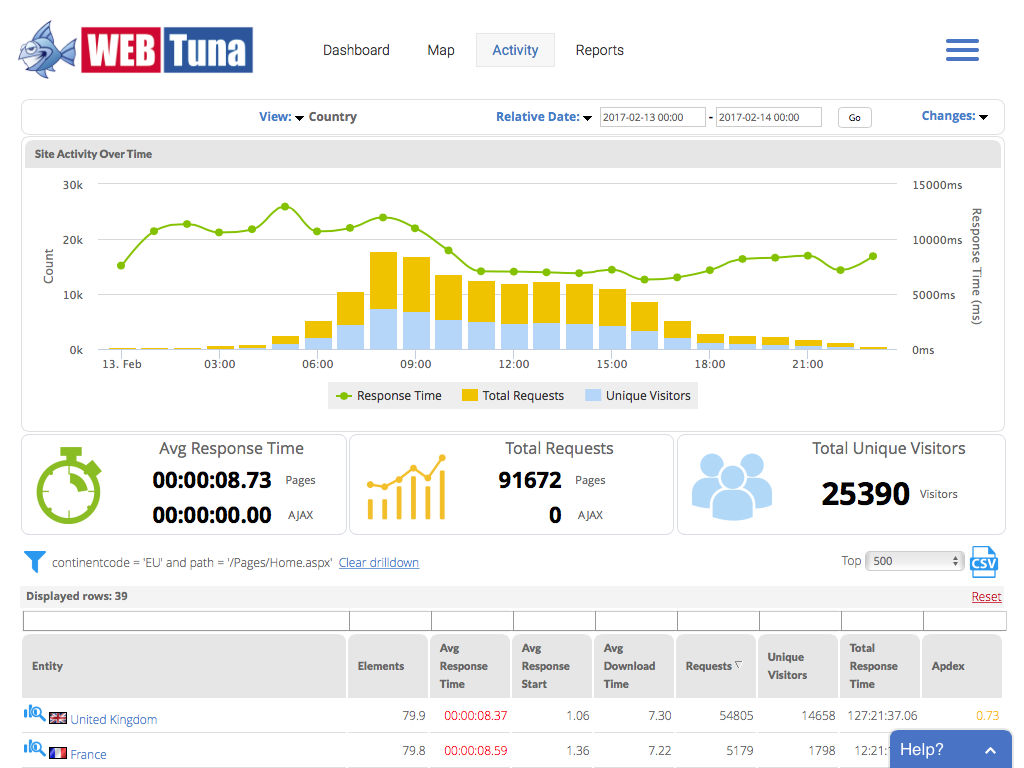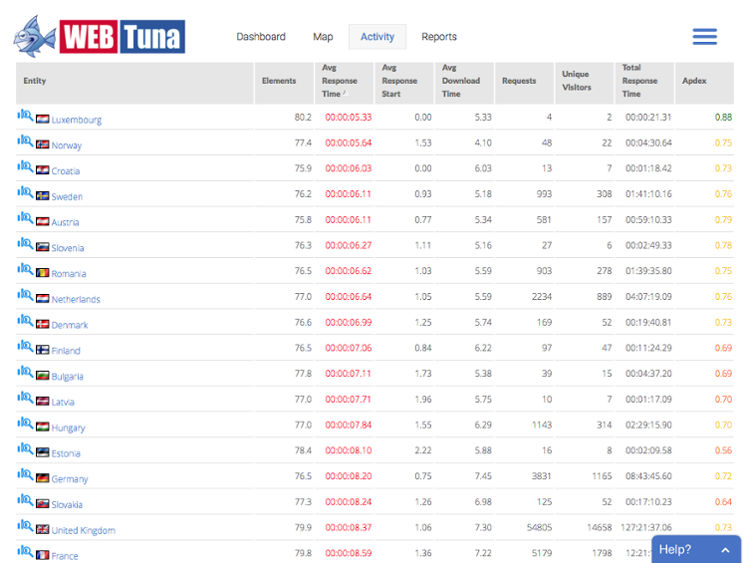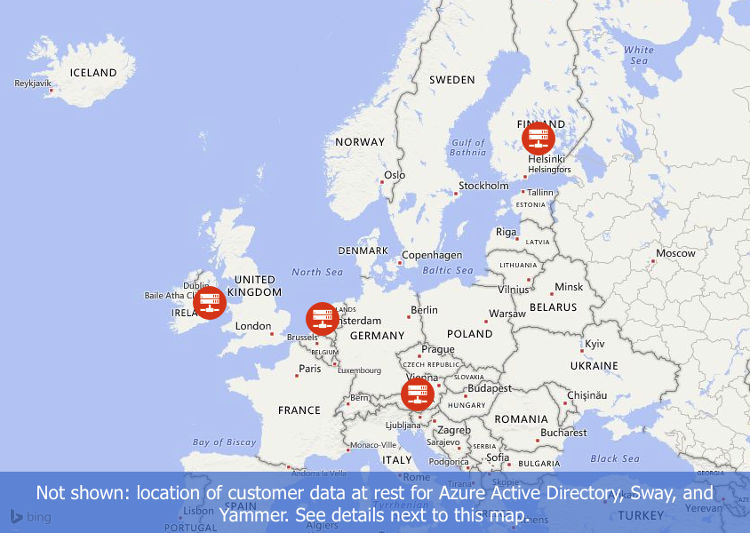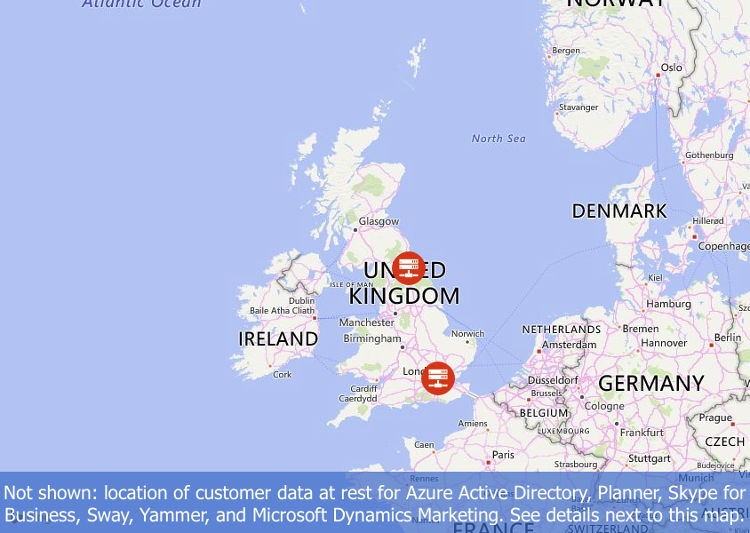Where is my SharePoint Online data centre?

Following on from Mick McGuinness’ excellent article on Keeping intranet home pages lean I thought it would be interesting to see where those intranet home pages were being served from, in particular SharePoint Online home pages. We are seeing an increasing number of our customers moving to SharePoint Online. One of the big challenges is making sure that users are getting as least as good performance as they did in the on-premises days.
For this study, I chose around 25 domains, all of the form my-company.sharepoint.com. There were a mixture of production and test sites, large and small companies. Most were UK-centric companies, with users around Europe. The reason for choosing UK companies will become clearer later. Although the content of each company’s home page is different, they do all have a home page and it is retrieved more frequently than any other page. Therefore it makes for a reasonable benchmark. It also gives us enough data to draw some reasonable conclusions.
The screenshot below shows the results in WebTuna for all the home pages (/Pages/Home.aspx) in Europe on 13 February 2017. The over-time profile follows the pattern of a typical working day, with lots of users opening their browsers at 8am and 9am, and fetching the home page. At the bottom, the countries are ranked by the number of requests (see the little down-arrow next to Requests). We can see that users in the UK made more than 10 times the number of the next country, France.

You might hope that since most users are in the UK, they would have the fastest response time. After all, more man-hours will be lost in the UK if the pages are slow. But you would be disappointed. The screenshot below shows the same data ranked by response time (see the little up-arrow next to Avg Response Time). We find the UK and France languishing in 17th and 18th places respectively. This is beginning to look like the voting in the Eurovision Song Contest.

Compared with the fastest country, Luxembourg, there were 2 more man-days lost in the UK waiting for the home page on 13 February ((8.37 – 5.33) * 54805).
So what is going on here? A clue may be in the location of the Microsoft data centres. It is possible to find out the location of your SharePoint Online data centre using traceroute. You won’t get a complete trace but you can tell the location from the last entry that you receive. Here are the last few lines of traceroute from my machine.
1
2
3
4
5
12 ae62-0.ams-96c-1b.ntwk.msn.net (104.44.9.143) 18.706 ms
tor5.am1.msedge.net (104.44.80.150) 17.307 ms
ae61-0.ams-96c-1a.ntwk.msn.net (104.44.9.141) 18.429 ms
13 * tor5.am1.msedge.net (104.44.80.150) 18.839 ms *
14 * * *
The presence of ‘am’ in the last node name tells me that our tenancy is in Amsterdam. Applying this technique to the rest of our customers shows that none have their tenancy in the UK. The map below shows the location of the Microsoft data centres before September 2016. Anybody who set up their SharePoint Online tenancy in Europe before this date will have their data stored in one of these data centres. The correlation between the performance seen in WebTuna and location data in this map looks quite good.

Source: o365datacentermap.azurewebsites.net
In September 2016, Microsoft announced two new UK data centres. See https://blogs.office.com/2016/09/07/office-365-local-datacenters-now-available-in-the-united-kingdom/ for example.

Source: o365datacentermap.azurewebsites.net
Any UK company setting up their SharePoint Online tenancy now would be well advised to choose a UK data centre, at least from a performance point of view. The challenge for existing customers, it seems, is the logistical exercise of getting Microsoft to move your data for you from one data centre to another (you cannot do it yourself). Until that happens, there could be unnecessary man-hours lost in the UK.
